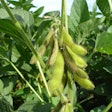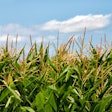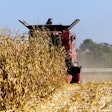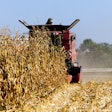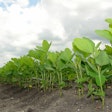
Recent USDA National Agricultural Statistics Service State weather reports reveal a complex picture of weather-related challenges facing American farmers in the early months of 2025. Recent reports highlight the diverse and significant effects of these extreme weather events on crops, livestock, and agricultural operations across the country.
Southern snowstorm: a "once in a generation" event
In late January, a severe winter storm swept across the Southern United States, bringing what AccuWeather labeled as a "once in a generation" weather event. The storm's impacts were particularly notable in traditionally warmer states:
- Snowfall records: Parts of southeast Texas and Louisiana received over 6 inches of snow, with some areas issuing blizzard warnings for the first time in recorded history.
- Economic impact: AccuWeather experts estimated the storm caused upwards of $14 billion in damages across the affected regions.
- Crop concerns:
- Citrus: Deep South Texas citrus crops face potential damage from the extreme cold.
- Sugarcane: In Louisiana, an area accounting for more than 40% of U.S. sugarcane production, temperatures dropped below the critical 24°F threshold, raising concerns about crop damage.
- Livestock challenges: Ranchers in the Mississippi Valley and east Texas scrambled to protect their cattle from the unusually cold conditions.
Winter wheat vulnerability
The arctic blast that accompanied the southern storm also posed risks to the winter wheat crop across a significant portion of the country's production area:
- At-risk areas: Western Kansas, eastern Colorado, and Oklahoma faced the highest risk, especially in regions lacking protective snow cover.
- Temperature thresholds: Winter wheat can begin to sustain damage at 0°F, with temperatures below -10°F potentially causing severe harm in areas without snow insulation.
- Assessment timeline: The full extent of damage to the winter wheat crop won't be known until spring, according to AccuWeather senior meteorologist Paul Pastelok.
Midwest and plains: drought concerns amid winter challenges
While the South grappled with unusual cold and snow, farmers in the Midwest and Plains states faced their own set of challenges:
- Drought worries: Iowa reported dry conditions, raising concerns about potential spring drought and increased fire hazards.
- Soil moisture deficits: Nebraska and South Dakota reported significant portions of topsoil moisture as very short or short, potentially impacting spring planting conditions.
- Livestock management: The extreme cold necessitated increased supplemental feeding for cattle across several states, straining hay supplies in areas like Kentucky and Tennessee.
Long-term impacts and adaptation
The unusual weather patterns of early 2025 are prompting farmers and agricultural experts to consider long-term strategies for resilience:
- Crop insurance and federal aid: States like Connecticut are seeking federal block grants to compensate farmers for weather-related losses in 2023 and 2024, highlighting the ongoing nature of climate-related challenges.
- Adaptive practices: Citrus growers in affected areas are exploring methods such as irrigation and trunk covers to protect trees from extreme temperature drops.
- Livestock management: Ranchers are reevaluating their winter preparedness strategies, particularly in regions unaccustomed to severe cold snaps.
- Diversification: Some farmers are considering diversifying their crops or livestock to spread risk across different agricultural sectors.
As the 2025 growing season approaches, the agricultural sector remains cautiously optimistic but acutely aware of the need for adaptability. The extreme weather events of early 2025 serve as a stark reminder of the increasing volatility in climate patterns and their potential to reshape American agriculture.
The coming months will be crucial in determining the long-term impacts of these weather events on crop yields, livestock production and ultimately, food prices and availability for consumers across the nation.






